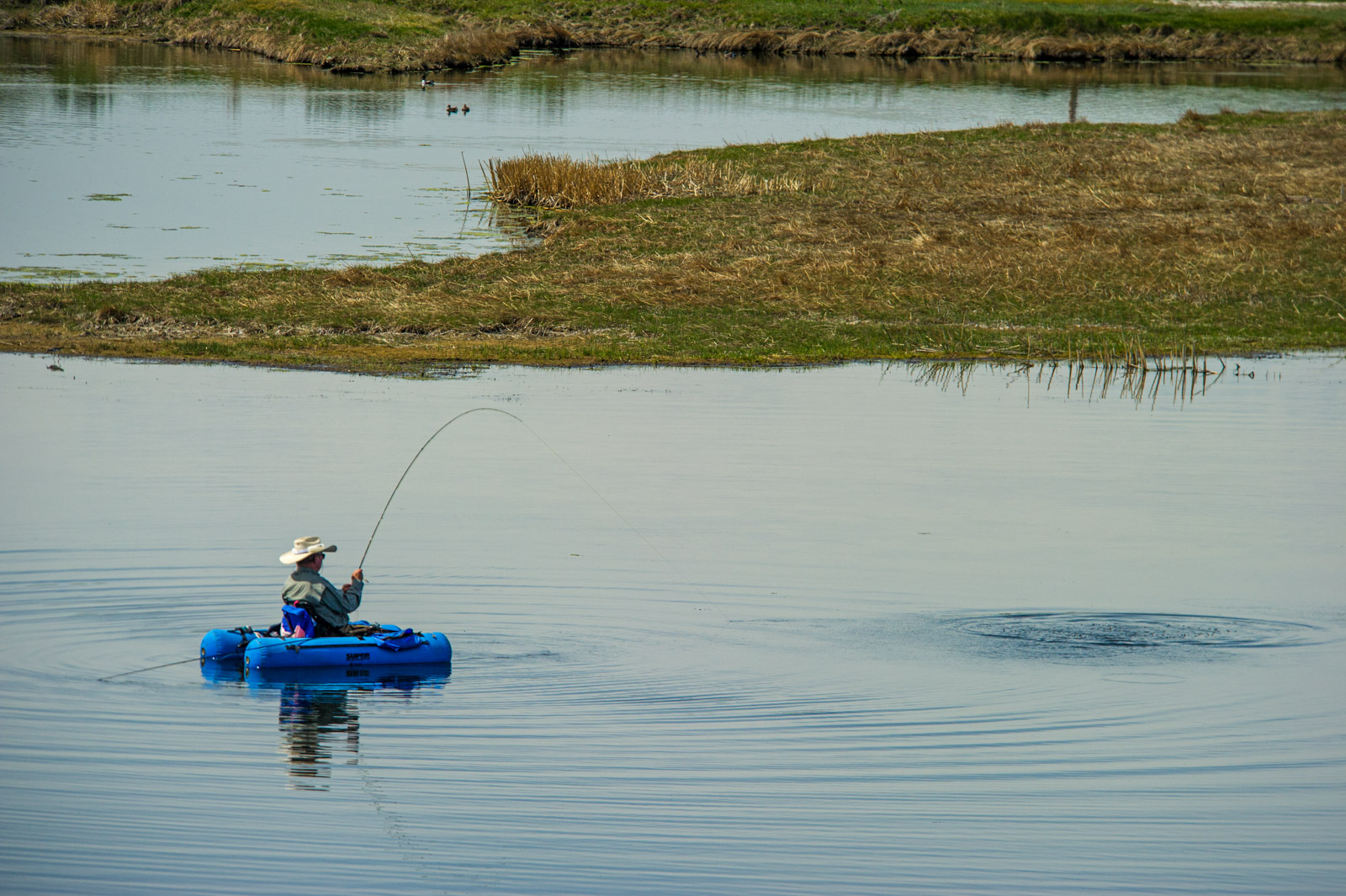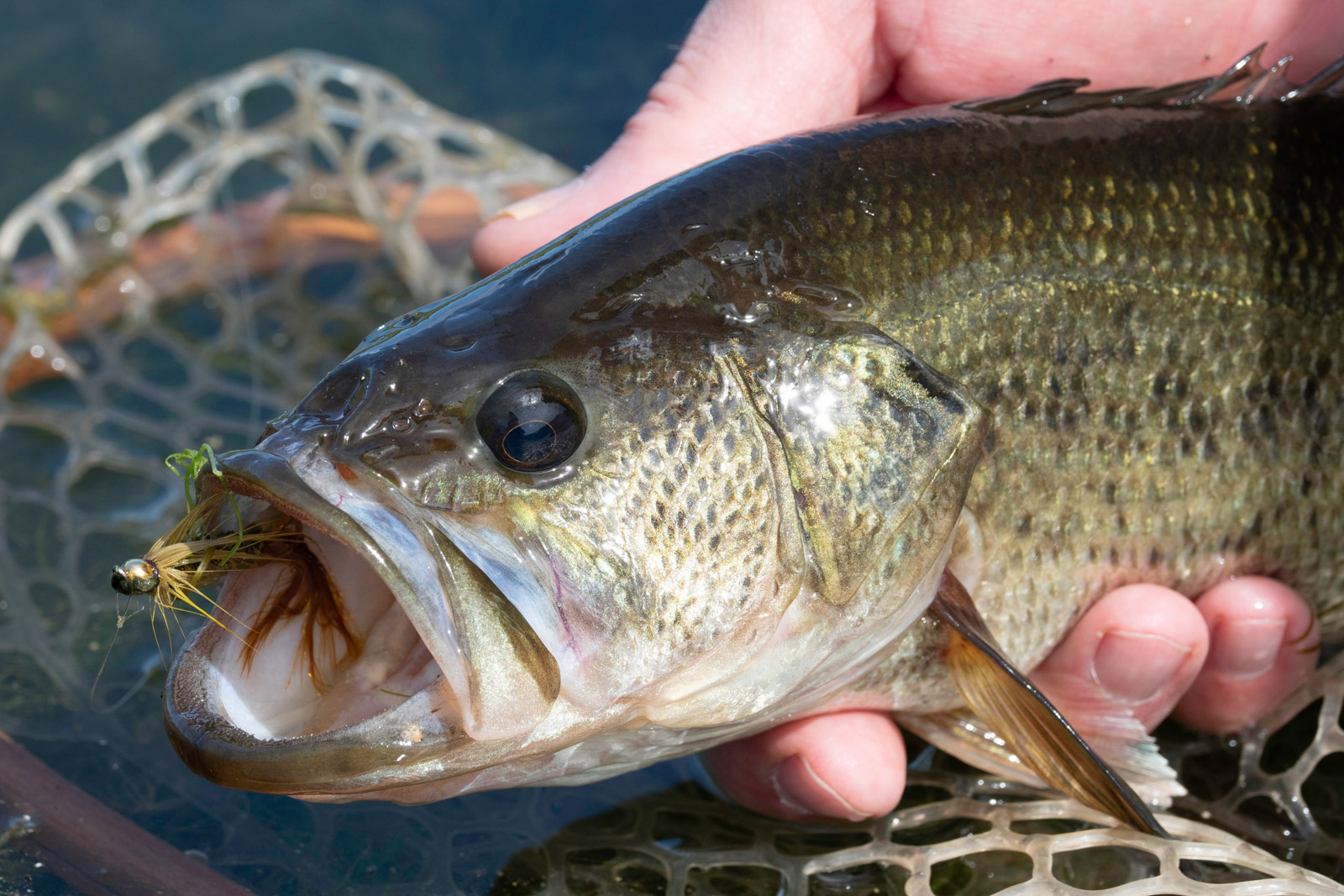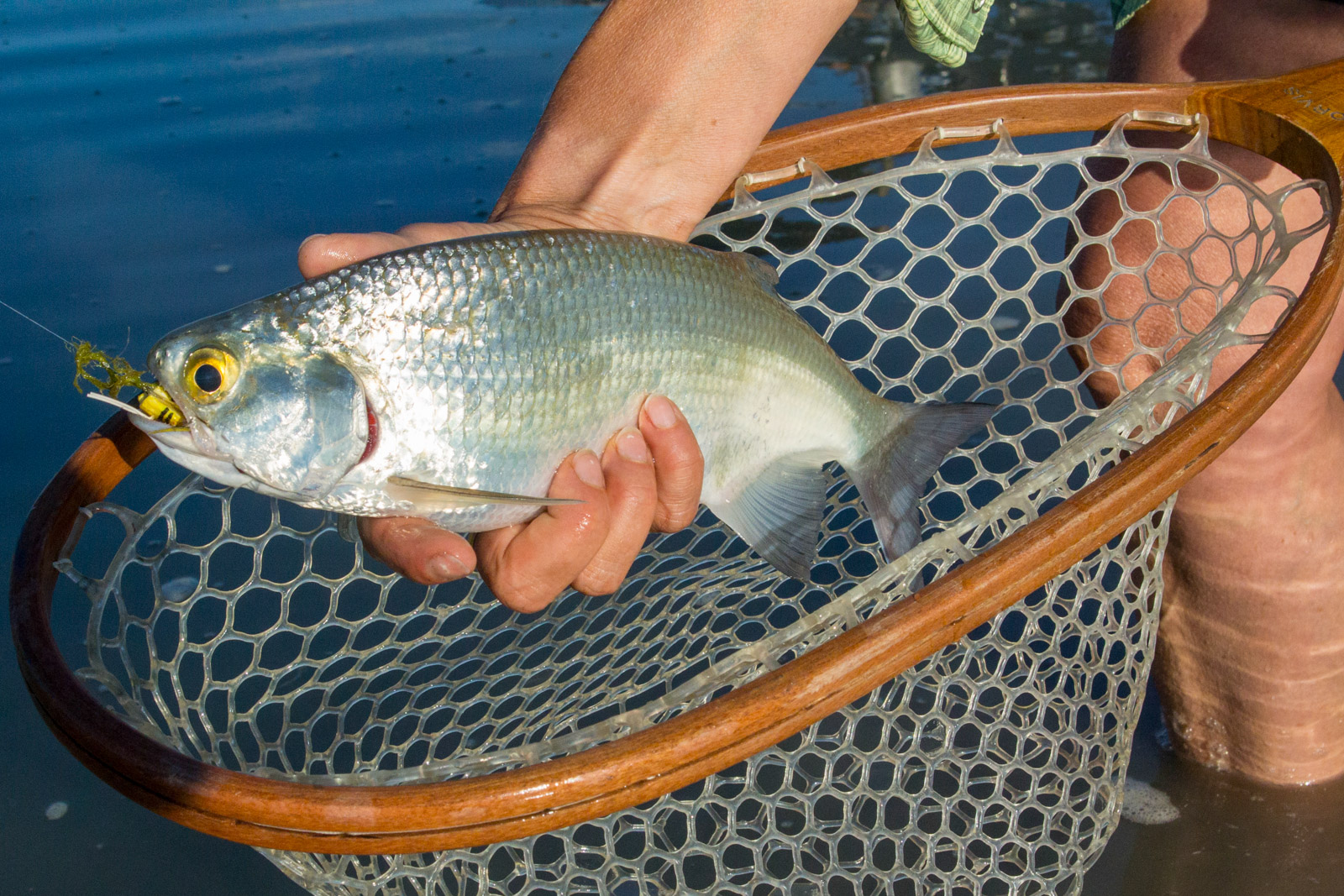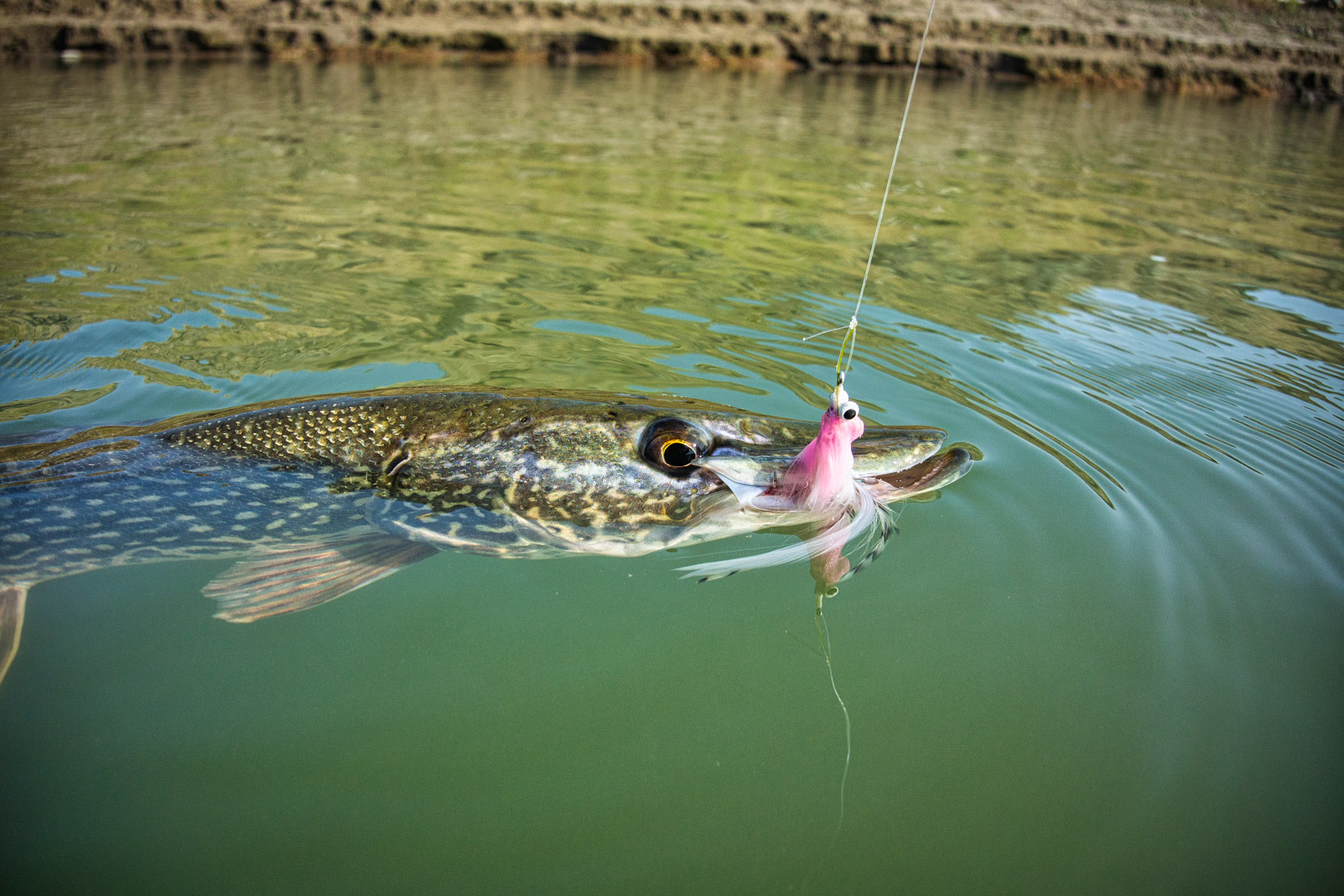Warm Spell

by E. Donnall Thomas Jr.
Since the afternoon heat had approached the frankly oppressive level, I was working the bank from the water wearing cut-offs and running shoes rather than the expensive chest waders that have become socially obligatory farther upstream on Montana’s storied Missouri River. In the past my refusal to adhere to that dress code had earned me some strange looks from guide boats drifting by and no doubt would be doing so today… if there were any guide boats. I was fishing—in solitude, no less—far downstream from the flotilla that launches from Craig. The current was slower and dingier than the tailwater current farther west and I doubt I’d passed by a trout all morning. While the setting may have seemed more appropriate for bait and conventional tackle, I was fly fishing this unlikely locale, just because that’s the way I always do it.
Along with my wife Lori and two friends in a second canoe, we were floating the Wild & Scenic section of the Missouri and had already spent our first night in camp. Thus far, we’d seen a grand total of zero other people since launching from Coal Banks Landing the previous afternoon. I’d spent the cool part of the morning with my 4-weight, catching goldeyes (an interesting native fish of which we shall hear more later) on the surface, but now I was after something bigger. There were so many possibilities that I didn’t even know just what I was fishing for, but with luck it could wind up in the frying pan that evening.

I had replaced my venerable Royal Coachman with a woolly bugger, a go-to pattern in situations such as this when the target species is largely unknown. In contrast to the fast action the dry fly goldeyes had provided, I hadn’t touched a fish since making the switch. I was just about to pack it in and hike the bank back to camp when something tagged my bugger with a strike harder than any I’d experienced all morning. I won’t make more of the fight than there was, but the fish tugged and made a few runs against my drag while I tried to deduce its identity. It finally proved to be a channel catfish in the six- to eight-pound range, and yes, it did wind up in the pan that night.
Fishing in solitude and catching catfish on flies… WTF? I may have been defying convention, but I was sure having fun.
I started fishing southwestern Montana’s famous blue-ribbon streams as a kid back in the 1950s and my, how things have changed. They still produce a lot of trout in magnificent settings, but as the popularity of fly fishing exploded and those water became a world-famous angling destination, the ambience changed radically. Guided driftboats made the rivers feel like bumper-car tracks. Access points became congested, with occasional rudeness and animosity on display. Don’t worry—this piece is not going to become a screed directed at the exploding guide industry and legions of out-of-state anglers crowding the water (although I have been involved in many regulatory attempts to address those issues). I’m simply extolling the virtues of a Road Less Taken—warm-water opportunities farther east, in settings that seem more appropriate to pronghorns and sage grouse than trout.

At this point I’ll cut to a descriptive catalog of species awaiting anglers ready to head to the prairie and fish outside the proverbial box. Walleyes rule here, and despite its intimidating size and complexity, Fort Peck Lake has become a famous destination for the species’ dedicated fanatics. Not to dwell excessively on our largest reservoir, but it also contains record-class smallmouths, walleye look-alike sauger, aggressive northern pike, acres of carp in the shallows, and a pair of more recently introduced salmonids—lake trout and king salmon. Despite misconceptions to the contrary, most can be taken on flies, especially smallmouths and northerns.
Fortunately for those who don’t feel like tackling such big water, there is more to prairie fly fishing than Fort Peck. A similar smorgasbord of gamefish inhabit mid-size water such as Nelson Lake, Petrolia Lake, and Tongue River Reservoir. Small WPA-era impoundments dot the prairie, and many have been stocked with similar species and a couple of personal favorites—largemouth bass and crappie. Some of these ponds lie in out-of-the-way places and angling possibilities can change drastically from year to year. The Montana Department of Fish, Wildlife & Parks puts out a helpful booklet with maps and lists of available species (including stocked trout, which grow to large size in some waters).

Introducing invasive species of any kind for sporting benefit no longer sounds like a good idea as it once did. Of the above-named fish, only the sauger and goldeye are native to Montana. However, before trout purists wax too indignant, they should acknowledge that brown, brook, and rainbow trout (east of the Continental Divide) are also aliens brought here so anglers could have fun catching them. No hypocrisy, please.
First described by Meriwether Lewis in June of 1805, the goldeye flies farther beneath the angling radar than all the rest, largely because of its small size, averaging less than a pound. Their redeeming characteristics are their willingness to hit dry flies and to jump. They should be on every serious fly-angler’s bucket list, and there is no better place to realize that goal than eastern Montana’s lower Missouri drainage.
Given the absurdly polarized state of our society as a whole, it was probably inevitable that similar divisions would arise within the Montana angling community, which break down neatly along geographic lines. To the west: trout and char, mountains, cool water, fly rods, driftboats, craft beers. To the east: bass and pike, sagebrush, warm water, conventional tackle, outboard motors, Bud Lite. As with other social divisions, this one proves arbitrary and counter-productive. Plenty of worthwhile fly rod opportunities await on the eastern Montana prairie.

